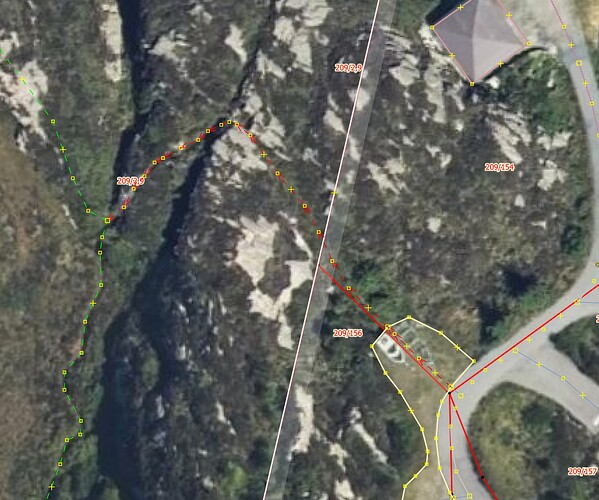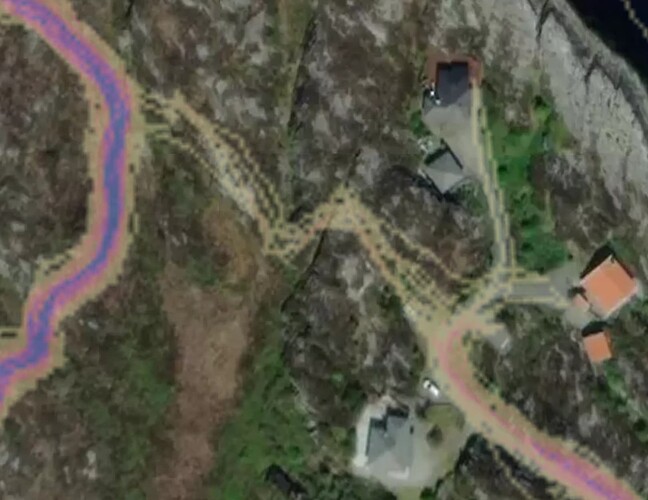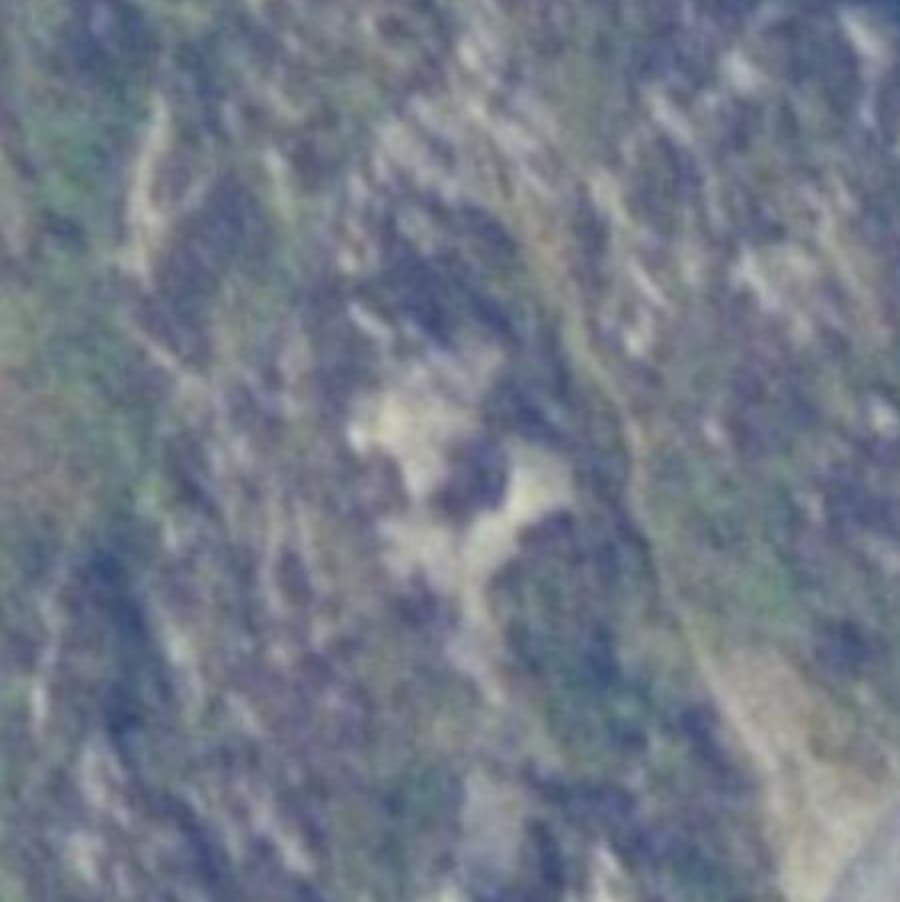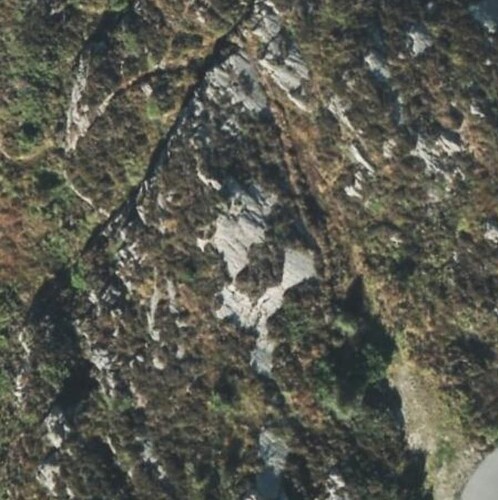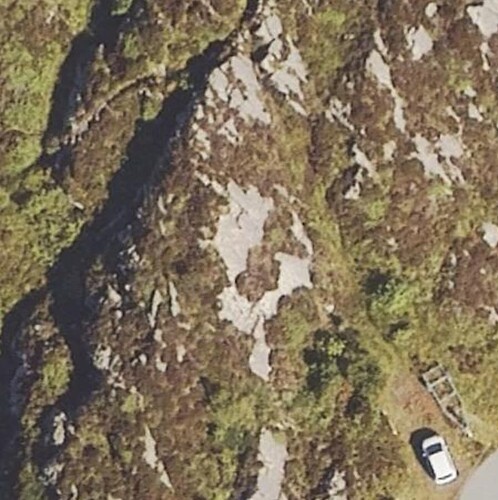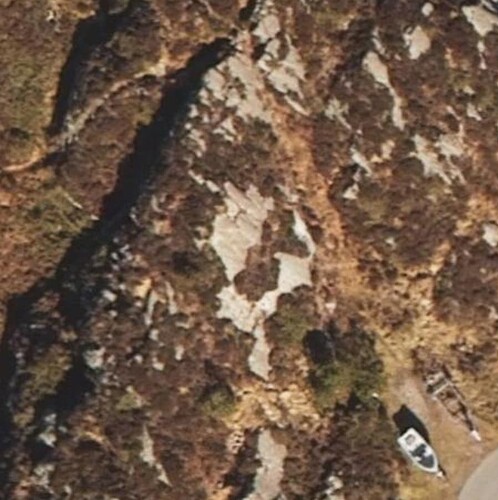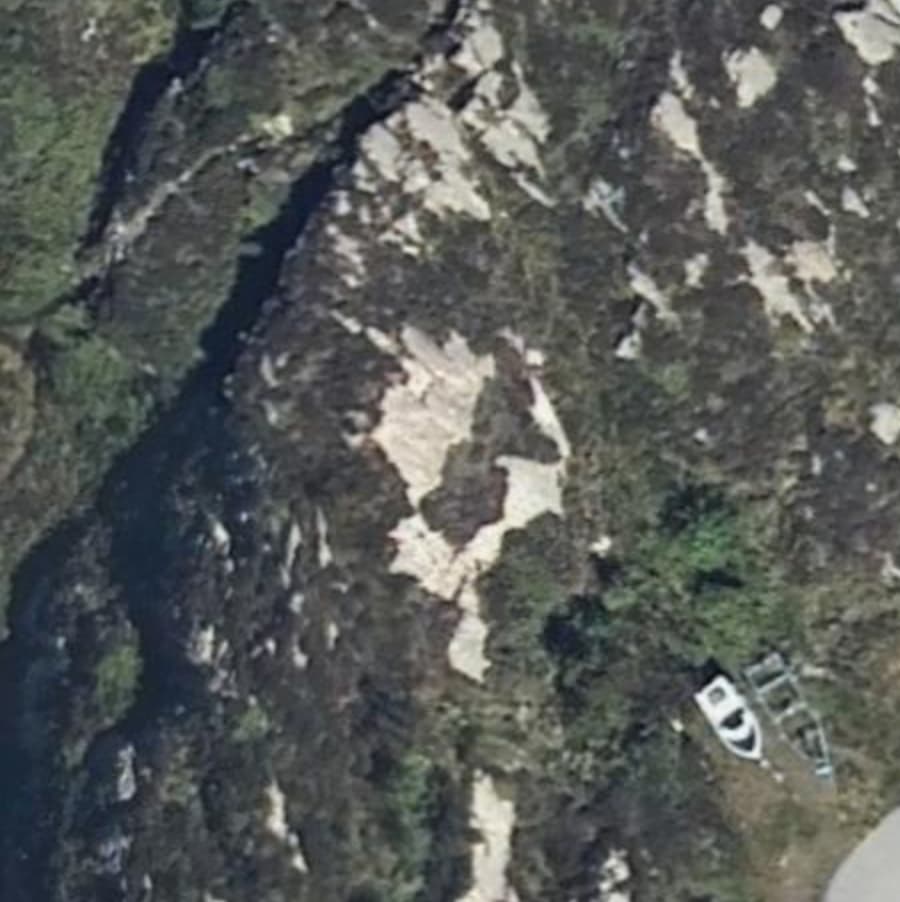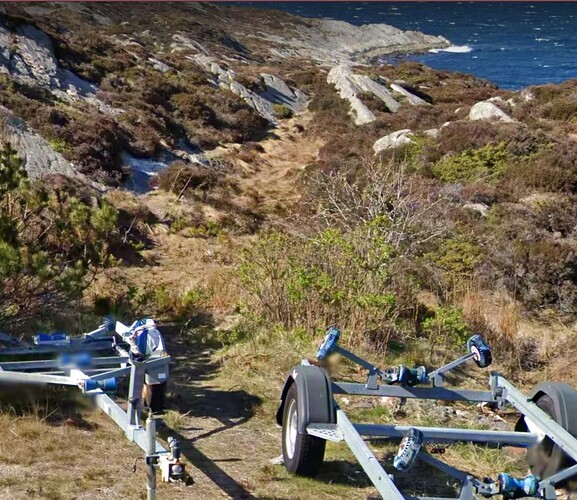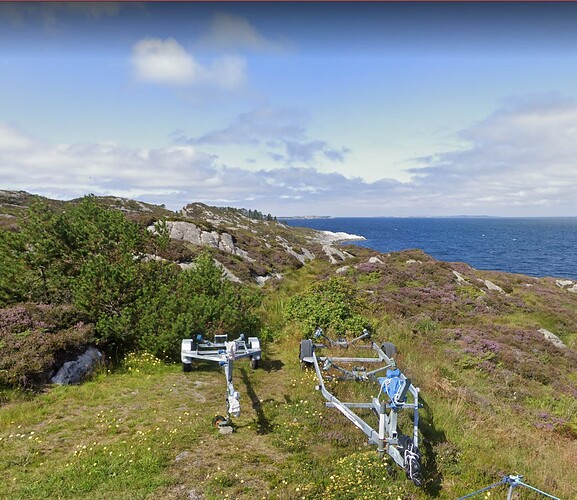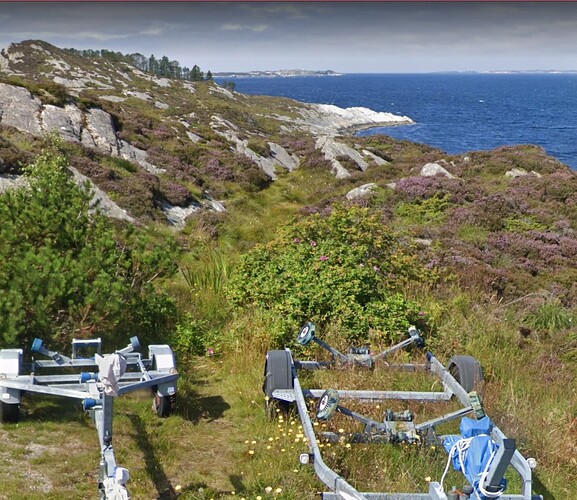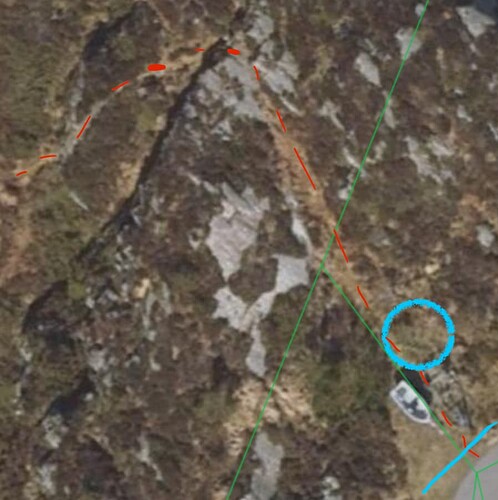I find myself in a dispute regarding the mapping of a selection of features in Norway. I have failed to reach agreement or consensus with my counterparts in said dispute, and rather than arguing though editing, I’d like to present the case to the Norwegian community in the hope of there being some degree of consensus on how we want to deal with such matters, one way or the other. This seems to be encouraged by the linked page above as an initial step before progressing matters to the DWG. I also think it makes sense to discuss this in the Norwegian community first as the matter involves the intricacies of Norwegian right-to-roam laws. I suspect that the DWG would prefer to outsource the interpretation of said laws to the Norwegian community, unless they possess experts in this field themselves.
A disclaimer: I know Norwegian, but I prefer having this conversation in English so as to make the content of the conversation more useful and actionable for entities such as the DWG, and foreign mappers contributing in Norway.
The dispute
A month ago I painstakingly mapped a path in the north of Øygarden municipality, in Changeset: 140816240 | OpenStreetMap. The path in question is Way: 1204964987 | OpenStreetMap. The path looked approximately like in the picture below.
Then, two weeks ago, the path was deleted by oarn | OpenStreetMap in Changeset: 141495337 | OpenStreetMap. This sparked a discussion on the changeset, and, to my understanding, though private messages between him and @Gazer75. The deletion was reverted by @Gazer75 to maintain the state of the database while the discussion was resolved. This happened in Changeset: 141516829 | OpenStreetMap.
The user oarn again tried to “discuss on the map” by removing the path in Changeset: 141589160 | OpenStreetMap. This deletion was subsequently reverted by @Gazer75 in Changeset: 141592259 | OpenStreetMap. From what I understand, the discussion between these two users petered out, and I don’t know the conclusions reached. If need be @Gazer75 can probably shed light on this. After this the path is left alone for a while.
Three days ago, however, the path is again deleted. This time by a new user with no prior edits, Turid Nordbye | OpenStreetMap. This happened in Changeset: 141994746 | OpenStreetMap. I instigate a discussion on the changeset. The user shifts the discussion to private messages, the contents of which can be seen here: Message Log. This user’s change is reverted by me while engaging with them to resolve the disagreement: Changeset: 142003692 | OpenStreetMap. This user never touches the trail again.
It seems, however, as if the action by this new user spurred oarn back to life. He adds a parking lot on top of the path, before eventually proceeding to delete both the parking lot and the path in Changeset: 142051472 | OpenStreetMap. I revert his deletions again, while engaging with him on said changeset. I argue that both the path and the parking lot should remain mapped.
This marks the start of a series of deletions and reversions of deletions between me and him, where I consistently engage with him, while he more or less ignores my communication attempts. In one of these edits I make a mistake and loose history of the path. The path continues its life as Way: 1212547085 | OpenStreetMap. Note that there is some overlap between the lifetimes of the two paths.
The user oarn is at some point releaved in his efforts to suppress this path and parking lot by a new user account, also with no prior edits: qwertet | OpenStreetMap. He starts his deletions with Changeset: 142095738 | OpenStreetMap. This changeset starts a protracted discussion where the final word is a simple impoliteness from said user. His change is also reverted by me. This is from a desire to maintain my work with the discussion is worked out and because I perceive this user account as an attempt, in lack of good faith, from the same person or persons to sidestep the resolution process. While this discussion is ongoing, the user proceeds with repeating his deletions again and again, while I keep reverting the deletions. I encourage him to seek out the community in order to mediate, but he seems unwilling, so instead I am doing so now with this post.
I’ve also decided to stop the edit war until we can work something out.
My interpretation of the dispute
First of all I think it is worth noting that this is not a dispute between @Gazer75 and me on one side and three unrelated users on the other. From our dialogue I’ve gathered the following:
- qwertet | OpenStreetMap represents the owners of Sprengsneset 67, the property that the path passes.
- Turid Nordbye | OpenStreetMap is the owner of Sprengsneset 26, the property with the disputed parking lot, and the property which the path passes right next to.
- I suspect that oarn | OpenStreetMap is Turids partner or similar, due to the patterns of his actions.
These users seem to all be in direct communication with each other. oarn | OpenStreetMap was the original user deleting the path, and, as he received pushback, he likely encouraged the other two to sign up in other to gather support. Hence, from now on I will treat these accounts as the same entity, “the counterpart”. I’ll now go on to summarise their arguments and my take on them.
The counterparts arguments
- The path does not exist de facto, and hence shouldn’t be mapped
- The counterpart argues that the path does not, in fact, exist on the ground. The exact shape of this argument varies. They argue that the path of too recent origin to be considered a path. They also argue that it isn’t “formally sanctioned” or the like, and therefore cannot be considered a path. They also argue, it seems like, that the path cannot be seen on the ground anymore, without going into further details.
- The fact is that this path is visible in orthographic photography from 2023, 2021, 2004, and 1962. The Strava heat map also shows trail-like activity on this trajectory. It was also visible on the ground when I walked it some years ago. Furthermore, I have verbal confirmation from friends that have walked the path recently that it is still in fact there. In light of this I feel there is ample evidence that there is, in fact, a path there, despite the counterparts claim to the contrary. It can be argued that the trail does not have excellent
trail_visibility. But it cannot be argued that the trail is not there. Also, there is no requirement for a path to be legally sanctioned for it to be mapped in OSM. Finally, despite the counterpart claiming local knowledge, I don’t think this should be taken at face value, since they have expressed multiple motives for wanting the path to not exist.
- The path crosses private property and access is thus not allowed. Hence the path should be deleted.
- The counterpart argues strongly in favour of the path crossing what we in Norwegian call “innmark”. The main argument seems to be that the property, as a whole, is zoned as residential land. This argument is used to justify the full deletion of the path.
- My take is that neither conclusions can be justified. The jist of my argument is that legal precedent shows that one does not consider the entirety of residential properties as “innmark”. Particularly not in the coastal zone, which this conflict resides in. Furthermore, even if this was “innmark”, I feel that the right approach would be to set an appropriate
accesstag on the path, rather than deleting it outright. If nothing else this documents the state of affairs to future mappers, such that they don’t add the path again.
- The parking lot isn’t actually a parking lot, and should not be on the map
- The counterpart argues that the parking lot that was added and subsequently deleted is not a parking lot, but just an “open space”.
- I argue that this contradicts both the zoning documents for the area, which describe it as a “biloppstillingsplass”, and verbal confirmations from the counterpart that this is in fact what it is.
They do present more arguments than this, but this my attempt at a summary. For more details one can look at the correspondence that I share further up in this thread.
My request from the Norwegian OSM community
This is a dispute that represents the conflicting interests of land owners and everyone else. The final say in this dispute is had by the municipality and the county governor (statsforvalteren). The property owner can demand that the municipality make a verdict in matters of dispute regarding the right-to-roam law. However, this demand cannot be put forward by your every day OSM contributor.
Hence, it sets a dangerous precedent if we allow property owners to get away with path deletions while a dispute has not yet been decided by the municipality. This creates no incentive for the property owner to get the dispute settled.
I am also of the opinion that the law here is quite clear, and that the counterpart does not have a right to lay restrictions on the path in question. I think the community should support this notion.
Therefor I ask the Norwegian community to consider the following:
- Do we want to allow property owners or their representatives to delete and/or damage database content without putting forward legally binding statements from the municipality or county governor?
- Based on the details of this concrete dispute, does the counterpart have a worthy case?
I’ll of course be around in order to clarify and answer questions, as needed.
